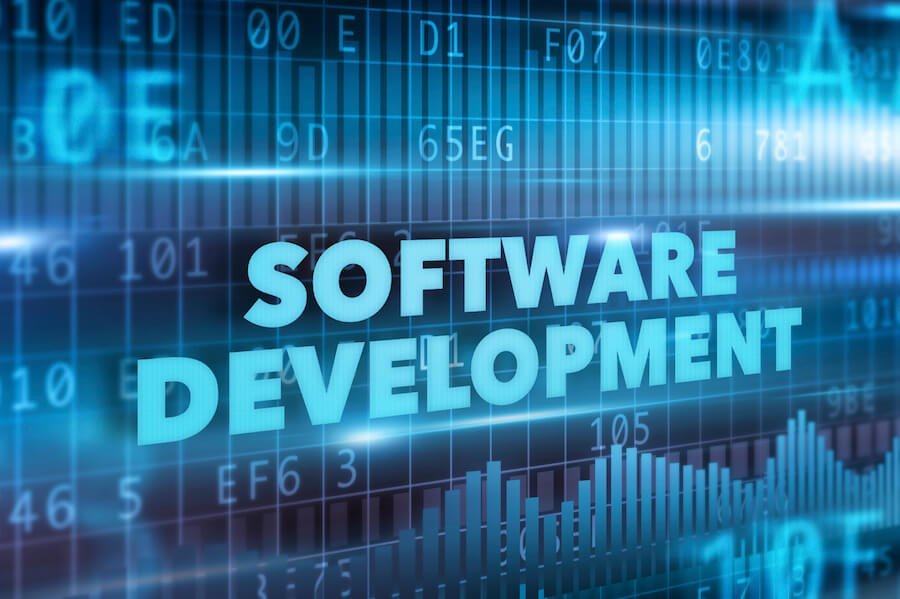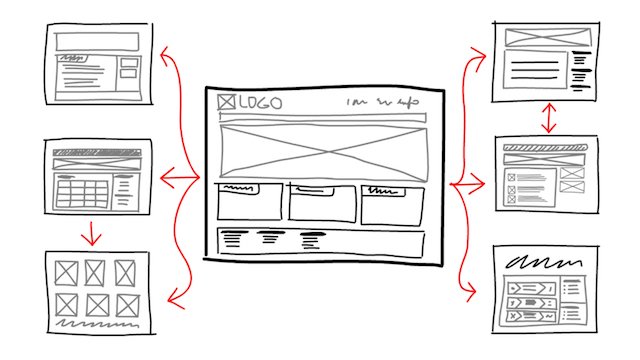5 easy Software Development Process
The software development process includes planning, defining, developing, programming, recording, reviewing, and fixing bugs to build and maintain applications, frameworks, or other components of the software. This process involves not just the actual writing of code but also the preparation of specifications and objectives, the design of what is to be coded, and the assurance that what is developed.
Until system development approaches came into being, the implementation of new systems or products was mostly performed using management and technical staff knowledge and intuition. Long ago, though, the complexity of modern systems and computer devices made clear the need for some form of the organized development process.
Phases of Software development:
- Identification of the required software
- Analysis of the software requirements
- The detailed specification of the software requirements
- Software design
- Programming
- Testing
- Maintenance

In general, the development of commercial software is usually a result of availability on the marketplace, whereas the advancement of software development is typically the result of a need or a problem within the business environment. The process of software development is most often directed by some form of system software development (SDM). Referred to in a variety of ways, including process models, implementation guidelines, and life cycle models (SDLC) for systems development.
The five best Software development process is given below:
1. Waterfall Model:
The development of waterfall software is the classic software-building model, with a linear sequential flow method with objectives for each design phase. It is one of the best sequential development approach, in which development is seen as flowing steadily downwards like a waterfall. The waterfall model simplifies task scheduling because there are no iterative or overlapping steps. Some people prefer to call this a “plan-driven” process because you first need to know everything that needs to be completed and in what order to complete projects. Thus the name “Waterfall” continues to flow into the next section.
Who it’s for:
This process is suitable for teams with rigid structures and documentation needs. The Waterfall software development process works best when the priorities, specifications, and technology stack are unlikely to change drastically during the development phase (such as in shorter one-off projects), due to its static structure and long upfront preparation period. The Waterfall method is ideally suited for larger organizations (such as government agencies) that need sign-offs and supporting documents on all the specifications and scope before starting a project.
Who it’s not for:
If you are testing a new product, require user response mid-stream, or would like to be more dynamic in your development process, it’s not suitable for you to implement the Waterfall development process.
- Agile and Scrum Process:
The Agile software development process (and Scrum, its most popular methodology), prefers an incremental and flexible growth strategy. In this process, team members work 2 weeks to 2 months in “Sprints” to build and transfer usable software for reviews to users. Agile is all about moving quickly, frequently releasing, and responding to your users’ real needs, even if it goes against what’s in your initial plan. This means you don’t need a full list of requirements and complete knowledge before starting work.
Instead, you’re moving in one direction, recognizing that you’re going to change course along the way. Here’s a simple example of what it could look like in practice. Let’s say you’re developing a new app for one of your products that could have features like X, Y, and Z. Instead of spending months constructing it all, you had spent 2-4 weeks developing the basic things that are both useful and functional (called an “Agile Sprint”) and then delivering it to your clients. This allows for stricter feedback loops throughout the process of software development so that you can adapt and respond to real customer needs.
Who it’s for:
Agile is the software development process favored by most startups and technology companies testing new products or doing continuous updates to long-standing ones. As small updates and user feedback become easier to do, Agile allows businesses to move quickly and test theories without risking their professional reputation on a major release that their users hate. Often, as testing takes place for each minor change if anything more severe is wrong, it is easier to track defects or roll back to a previous version of the product.
Who it’s not for:
It is not suitable for the teams with extremely tight budgets and timelines. On the flip side, the fluid nature of Agile means that projects can quickly go beyond their original timeline or budget, build conflicts with existing infrastructure, or be disrupted by mismanagement. This does not mean it is the right option for risk-averse or resource-stricken teams.
- Incremental and Iterative:
The incremental and iterative processes of software development are a common way between the framework and upfront planning of the Waterfall process and the versatility of Agile. Although both introduce the concept of making tiny bits of software and releasing them to users for input, they vary in what you’re generating with each update. Each “incremental” increase in the product adds a straightforward advantage of a single component or feature in the Incremental Software development process. Think of it as an overall plan, build an MVP with only the basic functionality, and then add new features based on feedback. However, in the development phase of Iterative Apps, each edition you release contains a list of all of your versions. Think of it like building a v0.1 with the simplest version of each feature, and then updating it to v0.2, v0.3, and so on throughout the board.
Who it’s for:
This software development process is for the teams with a clear requirement who want more flexibility than the Waterfall method provides. Both of these bring some degree of flexibility to your software development process without throwing out the screen an overall plan, making it ideal for large projects with a defined scope. You get early feedback on your core function with the gradual approach which can help you validate your business case right away.
While the iterative approach offers consumers an early look at what the final product might be so that feedback can be clearer and more centered. In both cases, you talk to users at an early stage about what they want, which can save you tons of time, money, and headaches as if you were waiting until later.
Who it’s not for:
This process is not suitable for the teams without a clear long-term technology plan. Unfortunately, it has its problems trying to add structure to a flexible approach. Perhaps the aims, procedures, or technologies of your company will change over time, making previous iterations useless or broken. Or maybe your codebase becomes messy and bloated because it adds functionality without looking for efficiencies. Additionally, both of these models require heavy planning and architecture-building early on. That is, they are not suitable for smaller projects or teams that are still researching use cases and trying to find a fit for the product-market.
What’s the difference between Incremental, Iterative, and Agile?
You might be curious about the difference between the incremental, iterative, and Agile software development processes when you just read the last few sections. Although they’re pretty close, some main differences do exist. Each incremental approach increment constructs a complete feature. You are building small portions of all the qualities while in iterative. Agile, on the other hand, combines aspects of both approaches. In each Agile sprint, you build a small portion of each feature, one at a time, and then gradually add functionality and new features over time.
-
V-Shaped Process:
The concept of V-shaped software creation is a twist on the classic Waterfall approach that compensates for its biggest downfall: a lack of research. Instead of working sequentially through the development process and saving all your tests to the end, each stage of the V-shaped process is followed by a strict “validation and verification” step, where requirements are tested before moving on.
Who it’s for:
This process is suitable For the teams working on smaller projects. The software development cycle in the V-shaped form is perfect if you have a small project with fairly simple (and static) specifications and scope. Instead of running the risk of following a plan only to find issues at the very end, it provides ample opportunities to test along the way.
Who it’s not for:
This process is not suitable for teams willing flexibility and early user actions. The downsides of this process are the inverse of its positive features. If you’re building something beyond a simple, small project, it’s almost impossible to create a sufficiently specific strategic plan before doing so.
-
Spiral Process:
The Spiral software development model combines the emphasis on monitoring and risk management of the V-shaped model with the gradual design of Iterative, and Agile. When a strategy for a particular iteration or goal is in place, the next step is to perform an in-depth risk analysis to find mistakes or areas of unreasonable risk. For example, let’s say you come up with a feature as part of your strategy that hasn’t been verified with clients. Instead of just adding it to your current milestone, you may be building a prototype to test with users before you move into the full development phase. After each milestone has been completed, the scope expands further out (like a spiral) and you start with planning and another risk assessment.
Who it’s for:
This process is suitable for the teams that work on big projects. A process like this has the core purpose of reducing risk. If you are working on a large or critical project which needs a high degree of documentation and validation along the way, it may make sense to follow a path like this. It’s also helpful if a customer is not entirely aware of the specifications and expects big changes during the production of the product.
Who it’s not for:
It is not suitable for most people because the spiral software development process is rarely actually put into practice due to the time and costs associated with taking such a calculated approach. Instead, it is used mostly as an example of how to critically think about an iterative approach to the problem.
Click here to learn more about Software development:
What are some trends more about the future development of software?
Blogs:
A growing number of software developers are discovering they can make better software applications by sharing knowledge with potential customers from the outset and integrating customer input into development decisions. Although game software developers have been using this approach for years, business app developers are now also getting on and using blogs as a vital part of the development process.
Continued improvements in refactoring tools:
Eric Raymond, a leading philosopher about program development, maintains that the concept of refactoring is consistent with the idea of a get something working now and perfect it later approach long familiar to Unix and open-source programmers. The idea is represented in the Extreme Programming approach, too. As software applications are becoming larger, it will require better code review tools to maintain the codebases and diagnose bugs.







